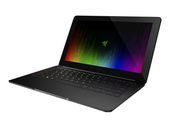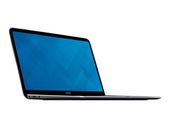Main
Model
Price
Advantages
Processor / Chipset
CPU
Max Turbo Speed
Number of Cores
Cache
64-bit Computing
Features
Chipset Type
Monitor
Diagonal Size
display
LCD Backlight Technology
Widescreen Display
Image Aspect Ratio
Color Support
Monitor Features
Type
Touchscreen
TFT Technology
Display Resolution Abbreviation
RAM
Memory Speed
Technology
Installed Size
memory
RAM
Operating System / Software
OS Provided
Audio & Video
Graphics Processor
Integrated Webcam
Sound
Memory Allocation Technology
Features
Hard Drive
Type
SSD Form Factor
Capacity
Notebook Camera
Integrated Webcam
Miscellaneous
Case Material
Security
Features
Color Category
Color
System
Notebook Type
Dimensions & Weight
Width
Depth
Height
Physical Characteristics
Weight
Input
Type
Features
Input Device
Backlight
battery
Capacity
Cells
Technology
Communications
Wireless Protocol
Wireless Controller
Features
Connections & Expansion
Interfaces
AC Adapter
Output
Videos
Summary
The XPS 13 uses a more number of RAM 8 GB DDR3 SDRAM compared to 16 GB LPDDR3 SDRAM of the Razer Blade Stealth. This means that the Dell XPS 13 will handle more number of running applications at the same time.
The XPS 13 has a 256 GB SSD which is bigger than 512 GB SSD of the Razer Blade Stealth.
The Razer Blade Stealth has a better battery life as it is equipped with 56 Wh battery which is 9 Wh bigger in comparison to the Dell XPS 13 battery. That's mean this notebook will work for a longer time without charging. The Razer Blade Stealth weighs 2.84 lbs which is 0.16 lbs less than the weight of the XPS 13.
Taking into account the above differences the XPS 13 becomes the best buy. Get the lowest price on Amazon.


